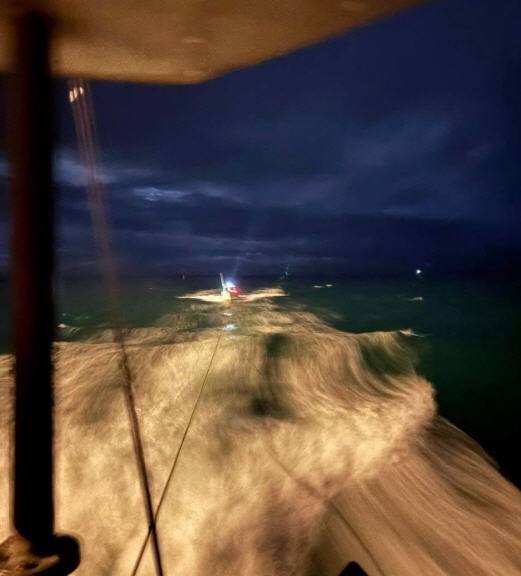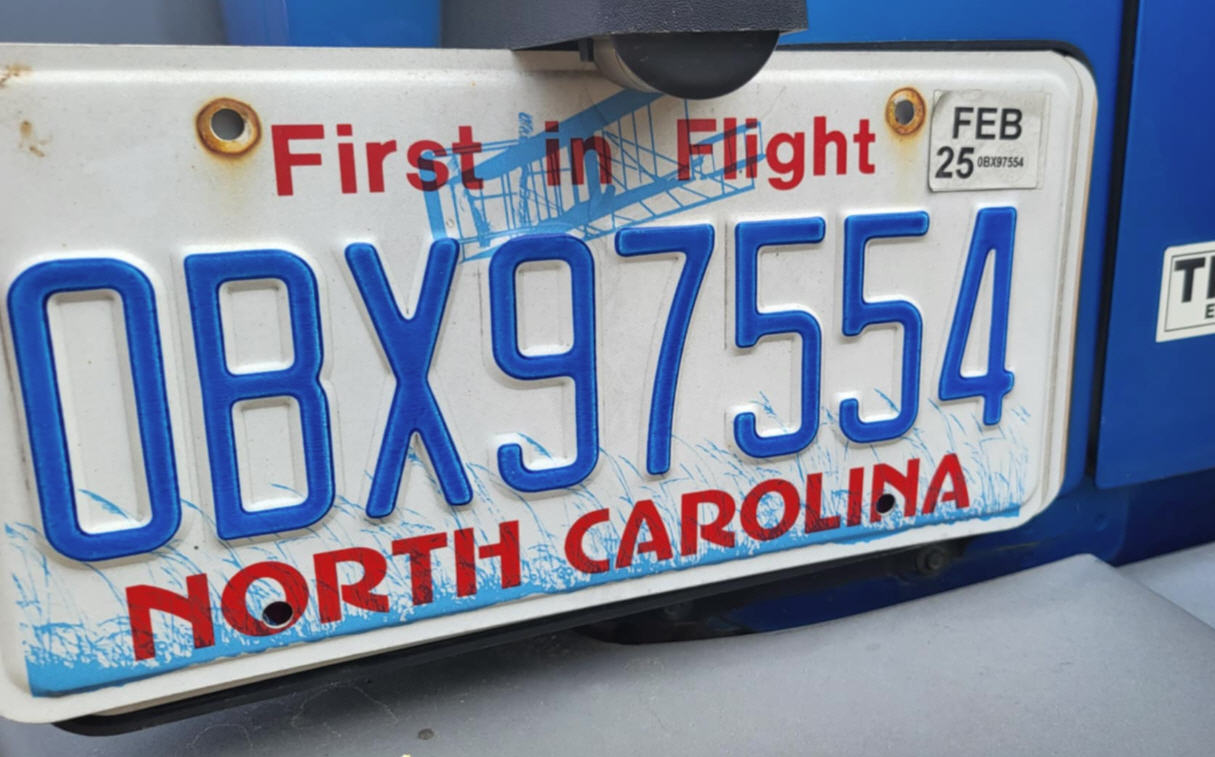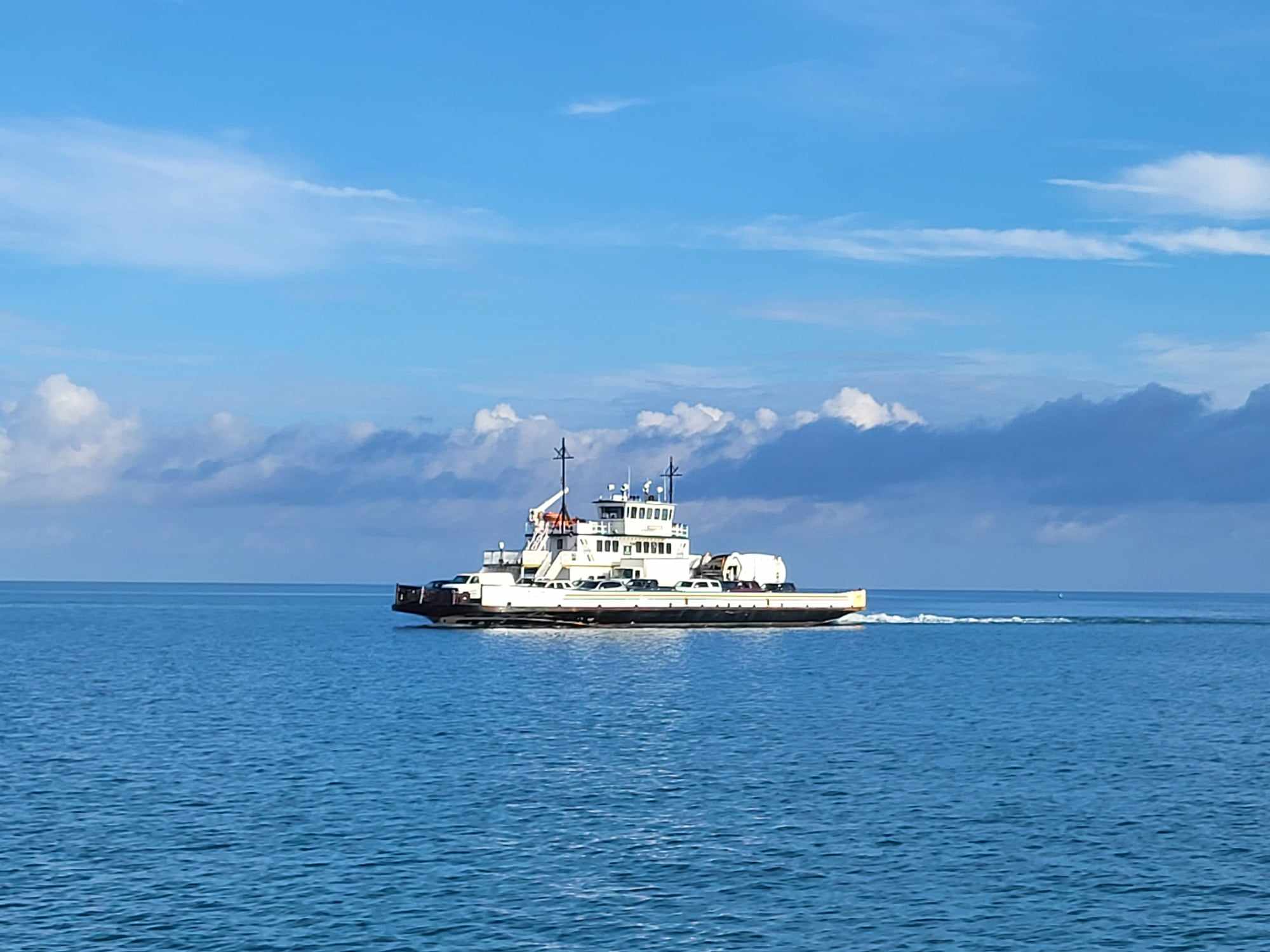Judge Boyle’s latest status conference had its revealing moments
While not exactly humming with excitement, the July 31 consent decree status conference in the federal courthouse in Elizabeth City had its revealing moments. Counting the judge, only 14 people had gathered in the courtroom by the time Judge Terrence Boyle entered. Of those 14, half were court officers or federal marshals.
The Southern Environmental Law Center (SELC) and its clients, the Defenders of Wildlife and the North Carolina Audubon Society, were represented by SELC’s Julie Youngman. As usual, the Park Service, SELC’s presumed adversary, was represented by Justice Department attorney Rudy Renfer. Seashore superintendent Barclay Trimble and chief enforcement ranger Paul Stevens were witnesses for both sides. Dare County Manager Bobby Outten, also the county’s attorney, represented those most affected by the issue of public access to the public beaches of the Cape Hatteras National Seashore, but he had no official voice in the proceedings.
The primary purpose of the conference, Boyle announced, was to review progress under his 2008 consent decree and the National Park Service’s 2012 final rule for managing beach access in the Cape Hatteras National Seashore. He added that he would consider future issues and “the other lawsuit,” referring to the suit filed in 2012 by the Cape Hatteras Access Protection Alliance (CHAPA) challenging the Park Service’s process of developing its beach access management rule.
Rudy Renfer stood to point out that only six months of the second year of rule implementation has passed, so a full annual report was not possible. He commended SELC’s Youngman for preparing several charts of species viability data covering the period 1992 to 2012 that would be used in testimony by the NPS representatives.
Trimble was sworn as Renfer’s first witness, with greater procedural formality than in the last status conference. As Trimble took the stand on Jan. 23, Boyle had waived the oath and, leaning toward him like a kindly old uncle, said, “You’ll tell us the truth, won’t you?”
Trimble began by acknowledging that in calendar year 2013 tropical storms have had a negative effect on the reproductive success of piping plovers and oystercatchers on seashore beaches. Only seven piping plover chicks and 11 American oystercatchers have fledged this season. However, he went on, there are 201 turtle nests on seashore beaches, which is close to last year’s record 242 nests. Other species data are not available, he said.
Renfer asked if there had been a consistent pattern in the species’ rebounding success since the consent decree was issued in 2008. Referring to Youngman’s charts, Trimble cited increases since the consent decree and since the 2012 Rule. He cited a dramatic weather-related drop in the numbers this year but did not draw attention to the fact that there were no storms during the prior years’ more successful nesting and fledging seasons.
Boyle asked Trimble if science predicts continuing increases in species numbers on the seashore beaches or the reaching of a plateau. Trimble replied that habitat capacity will be reached at some point and the numbers will no longer increase annually. He again pointed out that 2012 recorded the largest number of turtle nests since data had been kept. Reading from Youngman’s chart, Boyle noted 44 nests in 2004 and 242 nests in 2012 and asked if there was any variation in numbers among turtle species. No, Trimble answered, there is consistency across species, although loggerheads are the most numerous.
Julie Youngman of the SELC had no questions, so Boyle asked Trimble about the protected status of all birds and turtles on the seashore. Youngman intervened to state that piping plovers are in the threatened category in North Carolina, although they are considered endangered, a higher level of risk, in other parts of the country. Oystercatchers are classified only as a species of concern to the state.
But, Boyle asked, doesn’t the Park Service have a legal duty to protect all species? The Park Service has duty with discretion, Youngman answered, introducing a new term into the discussion. What’s discretionary about the duty and what’s compulsory, Boyle wanted to know. Trimble replied that the Park Service does everything possible to protect all wildlife. Youngman added that the Park Service’s discretion is limited by science and cited indicators that scientific assessment of the loggerhead turtle’s rebounding success might lead to its soon being removed from the endangered list.
Boyle next asked how the Cape Hatteras National Seashore fits into the big picture of the Atlantic coast habitat for turtles. Prior to the 2008 consent decree, Trimble said, 12 percent of all North Carolina turtle nesting was on seashore beaches. Between 2008 and 2011, that increased to 15.4 percent. In 2012, 20 percent of all turtle nests on the North Carolina coast were on the seashore beaches.
On past occasions, Judge Boyle has seemed to speak without fully considering the larger import of his words. He did it again on Wednesday when he asked Barclay Trimble if the 20 percent included the beaches in the Pea Island Wildlife Refuge where no vehicles are permitted on the beaches. Pea Island, said Trimble, was not included. Boyle went on that Pea Island is right between Bodie Island and Hatteras Island where access management regulations have been in effect. It would be useful to compare Pea Island turtle nesting data with those from Hatteras and Bodie islands, to use Pea Island as a control to validate the night driving restrictions imposed by the consent decree and the Park Service rule. Pea Island data would be good evidence, said the judge, apparently assuming that it would support the beach driving restrictions.
I haven’t seen such data, Trimble said. He left the stand with no further mention made of the drop in shorebird nesting and fledging success this season.
Rudy Renfer then called chief seashore ranger Paul Stevens, who was formally sworn. In response to Renfer’s question, Stevens said that since Jan. 1, more than 22,000 annual and weekly beach driving permits, most of them weekly, have been sold. Those numbers should go into the file as evidence, Boyle injected. Of the 30,000 permits sold in 2012, he asked, how many were annuals? Stevens said he didn’t know. But he could say that permit sales generated $2 million in 2012 and so far in 2013 sales revenues have reached $1.5 million.
Stevens went on to say that there are seasonal variations in permit sales, recognizing family vacations and best fishing months. The Park Service permit sales offices in Buxton and Coquina Beach are the busiest of the three offices, but they are keeping up with demand. In response to Boyle’s question, he reviewed the process of applying for and purchasing a permit. During the first year, the rangers coupled enforcement of the permit regulations with education of drivers. He added that beach drivers are policing compliance themselves, reporting vehicles without permits to the rangers.
Stevens said that law enforcement on the beaches has been beefed up with the hiring of four new enforcement rangers using funds from permit sales. Without those funds, the staff would be sharply impacted by federal sequestration budget cuts.
Boyle asked about the impact of the permit requirement on arrests for beach driving violations. In 2012, Stevens said, there was a 50 percent reduction in arrests for DUI and a sharp decrease in emergency night call-outs of enforcement rangers.
Before the consent decree was issued in 2008, Boyle said, before permit regulations, anyone with a vehicle could drive on the beach, creating a constant law enforcement challenge. Now, he said with apparent satisfaction, no one can drive without a permit or at night. And the people who are permitted to drive are more responsible drivers.
Stevens agreed, citing similar permit restrictions on the national seashores on Cape Cod and Assateague Island in Virginia. There have been no vehicle deaths since the permit regulations went into effect.
After Paul Stevens was excused, Judge Boyle addressed the court. SELC filed its lawsuit against the National Park Service in 2007, he recalled, demanding that an ORV management policy be enacted at the seashore. A consent decree by Boyle to settle the suit was issued in 2008, and a Park Service management plan and rule were effective in 2012. As part of the consent decree settlement of the SELC suit, an injunction — against any vehicle access to any beach in the seashore — was held in abeyance to ensure successful performance of the terms of the decree. There seemed to be a carefully ominous undertone to that last observation. He asked if there were other issues related to those matters, and none were raised.
The judge then asked if the SELC is involved in what he called “the other lawsuit.” There was some rather confused conversation among Boyle, Julie Youngman, and Rudy Renfer about who had filed the suit and whether that plaintiff had legal standing. After digging through her papers, Youngman advised Boyle that the Cape Hatteras Access Preservation Alliance had sued the Department of the Interior and the National Park Service, claiming improper procedures in developing the rule.
The lawsuit was filed in early 2012 in the U.S. District Court in Washington, D.C., with a motion for summary judgment. The Washington court transferred the case to Eastern North Carolina. In fact, Youngman pointed out, Judge Boyle is assigned as the presiding judge. SELC, she said, is only an intervenor in that case. Rudy Renfer disavowed any involvement by his office.
The judge asked if there were any other issues to be considered. Rudy Renfer said he had no issues and reminded the court that he and the other lawyers were there at the judge’s request.
In closing, Boyle stated that he has great interest in the case of the Cape Hatteras National Seashore and will continue to monitor it. He asked that the data included in Julie Youngman’s charts and other new information brought to the conference and promised to the court become part of the public case record. That, he said, will be in the interest of the park and of the people of the United States. The court stood adjourned.











